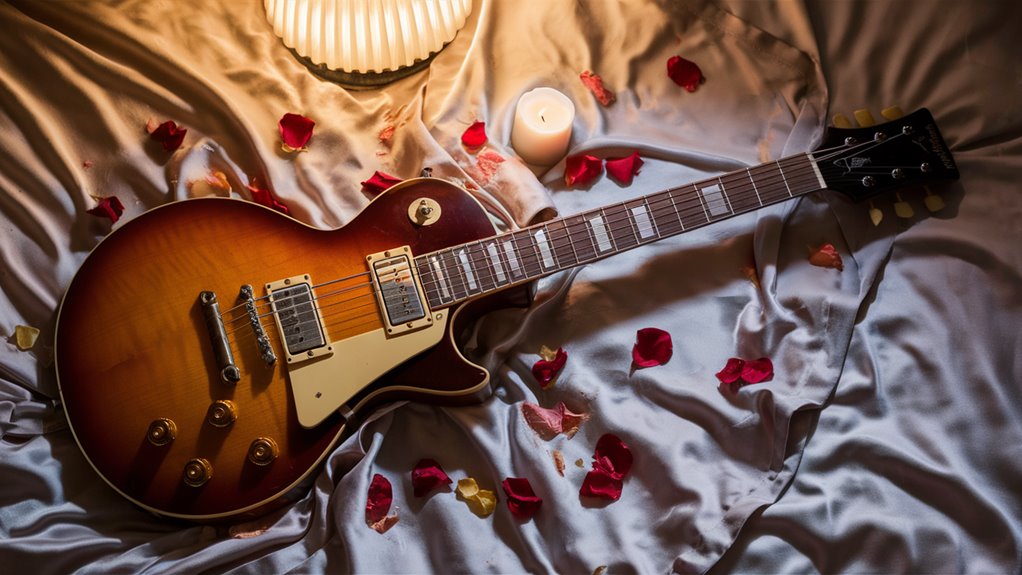Table of Contents
ToggleKey Rock Ballads Across Ages

The Start of Power Ballads (Late 1960s-1970s)
Rock ballads came as a big change in music. Led Zeppelin’s “Stairway to Heaven” in 1971 set the main idea. It mixed soft, gentle tunes with loud electric sounds, leading many other singers. Aerosmith’s “Dream On” in 1973 kept pushing this style, showing off Steven Tyler’s deep voice and its band’s great play. Queen’s “Bohemian Rhapsody” in 1975 broke the rules, mixing opera with rock in a big six-minute song. https://getwakefield.com/
The Top Time of Power Ballads (1980s)
The 1980s saw these ballads shine in both money made and art. Journey’s “Open Arms” became a top love song, with Steve Perry’s high voice and Jonathan Cain’s piano notes. Bon Jovi’s “Livin’ on a Prayer” told a story of everyday work life and caught many ears with its catchy part. Def Leppard’s “Love Bites” was a hit in how it was made, with many voice layers and clear guitar play.
Music Form and Big Effects
These big rock ballads had a clear form: soft starts with piano or guitar, getting tense through the song, and ending in a big chorus. These forms made big moments at concerts, bringing lots of people together in feelings. The style made simple love songs into big deals, making a mark that is still seen in rock today. Each song mixed great music skill with true deep feelings, making them last across time and staying needed parts of rock’s story. They have touched not just music but fashion, culture, and what rock means.
Ballads That Made Rock’s Story
The change in rock ballads began in the late 1960s, with a new mix of emotional singing and electric sound. Led Zeppelin’s “Stairway to Heaven” in 1971 changed the style by mixing folk sounds with more new rock forms, making a new way that led many others.
The Big Time for Power Ballads
Aerosmith’s “Dream On” in 1973 took the power ballad higher, with Steven Tyler’s known voice and the song’s strong build making a clear path for big emotional ends. Queen’s “Bohemian Rhapsody” in 1975 broke the old ways, putting in opera parts and tight singing that changed how rock was made.
Now and Big Money Made

The 1980s brought the style to its top money point with big songs like Journey’s “Open Arms” (1981) and Foreigner’s “I Want to Know What Love Is” (1984). The style’s big finish came with Guns N’ Roses’ “November Rain” in 1991, showing big music play and big scene ideas. These key songs went past just sales, changing what rock could be, and showing that deep feeling can match well with loud rock realness.
When Hard Rock Met Sweet Sounds
The Start of Power Ballads in the 1970s
The mid-1970s saw a big mix as groups mixed loud hard chords with soft love words, making a new kind of music. Lead groups like Styx and Boston put strong guitar work with love words, making the base for the power ballad style. These top groups showed how deep feeling could live with strong music beats.
Power Ballads at Their Top: 1980s Time
The early 1980s were key as Journey and REO Speedwagon made the power ballad form just right. Their main way started with soft piano or guitar, building up through the verses and then jumping into big chorus parts pushed by loud chords and high voices. Famous songs like “Open Arms” and “Can’t Fight This Feeling” showed this strong music plan. Smart Music Selection for Any Crowd
Big Sales and Top Spots
The late 1980s brought these ballads to a high point in sales. Bon Jovi and Poison raised the style with better making while still keeping the main mix of soft parts and loud ends. Timeless songs like “Every Rose Has Its Thorn” and “I’ll Be There for You” showed how loud rock could truly tell about soft heart topics, making sure the power ballad stayed big in music’s story.
